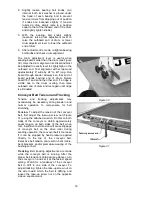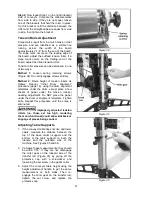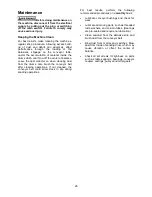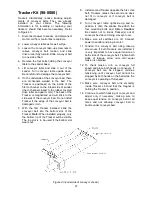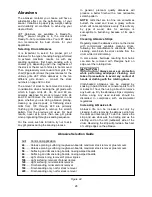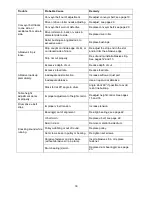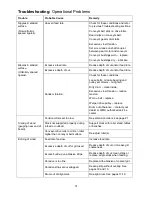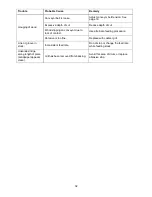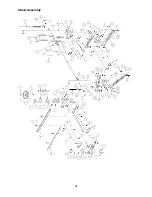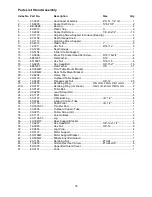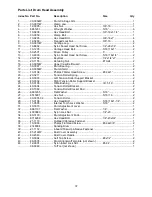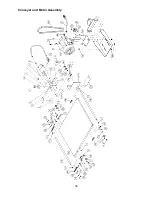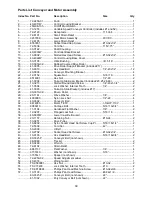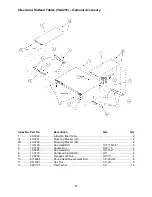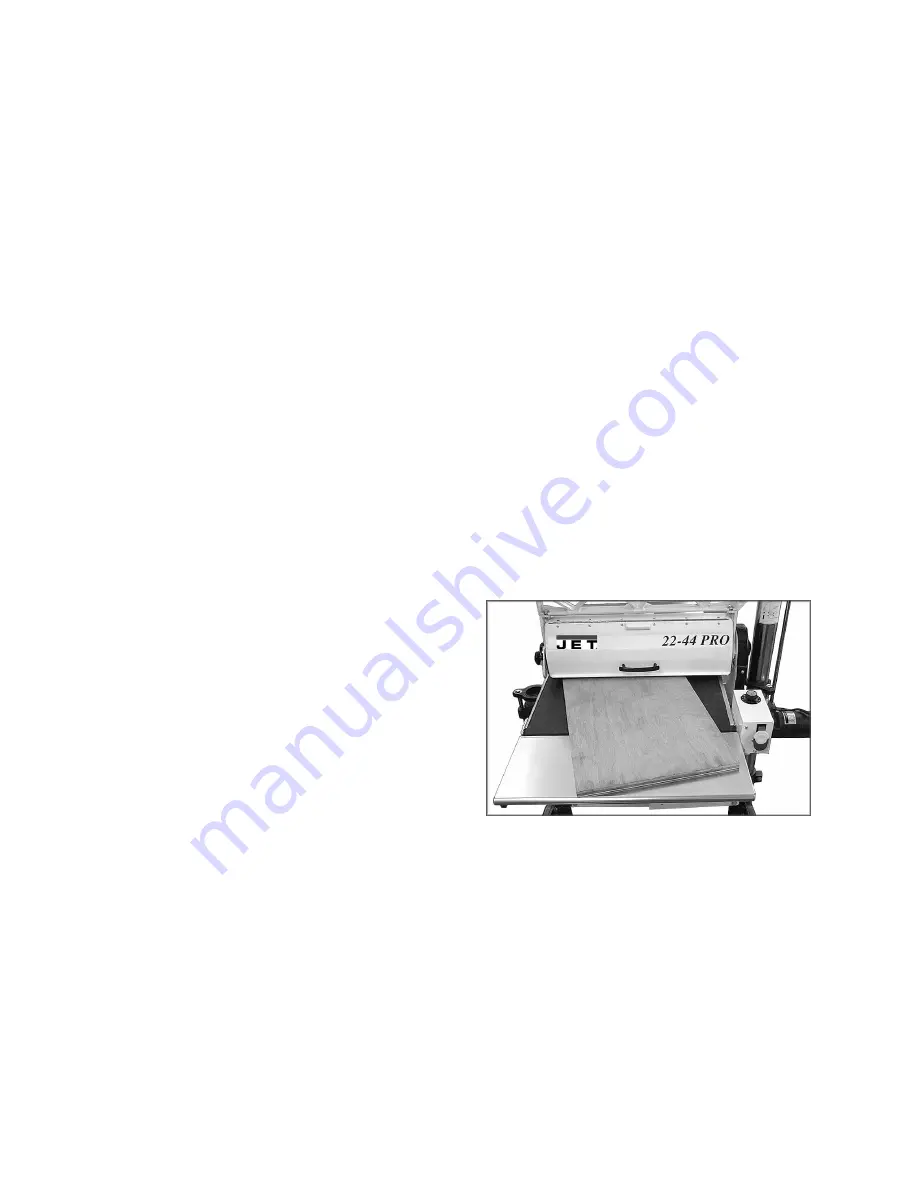
25
Learning how to use its adjustments and
controls will allow you to fine-tune the machine
for maximum results. The best results come
from experimenting with different abrasive grits
and machine adjustments to fit the job at hand.
Following is a list of useful tips which can help
you improve performance of your sander.
Dust Collection
When connecting dust collectors, remember that
straight pipe will not restrict airflow as much as
flexible tubing. Y’s and elbows will restrict airflow
less than T’s. Also, a hose smaller than 2-1/2”
diameter should not be used.
Multiple-Piece Sanding Runs
When abrasive planing (or thickness sanding) a
run of similar pieces that you want to have the
same thickness, it is best to determine the
thickness of the thinnest piece and process all
pieces to that same thickness in one session. Be
aware that the sander will remove cups and
crowns in the workpiece; consider this when
measuring and processing stock to the same
thickness.
Sanding Multiple Pieces At Once
When sanding multiple pieces simultaneously,
make sure to stagger (step) the pieces across
the width of the conveyor belt. This provides
better contact with the tension rollers. Try to
process only multiple pieces of similar thickness.
If there is a significant thickness difference, the
thinner pieces can slip on the conveyor belt if
they do not contact the tension rollers. Also note
that pieces thicker than 3/4” should be longer
than the minimum normally recommended to
prevent tipping of the stock.
Edge Sanding
When edge sanding, the sander will mimic the
opposite edge of the stock which is lying on the
conveyor belt. Because of this, it is important for
the stock edge to have been ripped at the proper
angle to the face before the sanding process.
When edge sanding stock that is less than 3/4”
wide or more than 2” high, it is good procedure
to stack and clamp several pieces together to
prevent them from slipping or tipping on the
conveyor belt.
Sanding Imperfect Stock
When sanding stock with a cup or crown, place
the crown up. This will stabilize the stock to help
prevent tipping or rocking during sanding. After
the crown has been removed and the top is flat,
turn the stock over and sand the opposite side.
To avoid personal injury, take special care when
sanding stock that is twisted, bowed, or
otherwise varies in thickness from end to end. If
possible, support such stock as it is being
sanded to keep it from slipping or tipping. Use
extra roller stands, help from another person, or
hand pressure on the stock, to minimize
potentially hazardous situations.
Face Frames and Raised Panel Doors
It is very important to have the proper abrasive
contact when doing this type of sanding. If the
machine is set to take an excessive depth of cut,
the result can be a gouge or dip as the drum
goes from sanding the rails at full width to
sanding just a few inches of width on the stiles.
To prevent this, make sure that when using
abrasives finer than 80 grit the drum is in contact
with the wood but can still be spun by hand. If
there is room, angling the stock on the conveyor
belt can also help. Slowing the conveyor feed
when coming to a rail in the stock can help
prevent a dip or gouge. This allows the abrasive
to work the wider width with less effort, and to
achieve better consistency of the finished
surface.
Stock Feeding Angle
Some pieces, because of their dimensions, will
need to be fed into the machine at a 90° angle
(perpendicular to the drum). However, even a
slight offset angle of the stock will provide for
more effective stock removal. The optimum
feeding angle for stock removal is about 60°
(see Figure 42).
Figure 42
Angling the workpiece for stock removal
provides other advantages, such as less loading
of certain areas of the drums due to glue lines or
mineral streaks in the stock, more even wear of
abrasive strips, potentially faster feed rates, and
lighter loads on the motor. Note that to get the
best final finish, however, the stock should be
fed through the machine so it will be sanded in
line with the grain of the wood on the final one or
two passes.
Summary of Contents for SandSmart 22-44 Pro
Page 34: ...34 Stand Assembly...
Page 36: ...36 Drum Head Assembly...
Page 38: ...38 Conveyor and Motor Assembly...
Page 41: ...41 Electrical Connections...
Page 42: ...42 NOTES...
Page 43: ...43...









